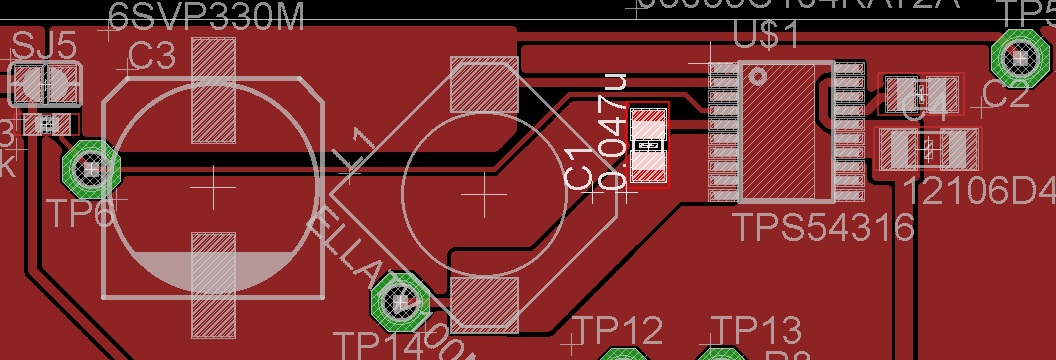Hello,
I'm working on a battery powered Project. My conditions are
- DCDC output 3,3V, 3A.
- DCDC input 4,8V-6V (4AA in series, Akku/Battery)
My schematic is the following.

- Input cap (C4): 12106D476MAT2A
- Inductivity (L1): ELLATV100M
- Output cap (C3): 6SVP330M
If I connect VBAT to a regulated voltage supply and try to determine the operating voltage area I get three areas.
- 0V-2,9V: nothing happens
- 2,9V-4,3V: up to 3,3V the output follows the Input, output then stays at 3,3V
- >4,3V: output is sawtooth
Where the 0V-2,9V and 2,9V-4,3V range seems to be ok, I do not understand what is happening above 4,3V
Unfortunatelly this is the Interesting voltage range for me.
Krind Regards
Michael







